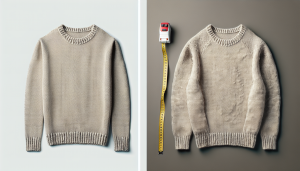
Wool is an ancient and precious fiber with unparalleled properties and characteristics. Merino wool is one of the finest and most famous of all wools. It is known as the “king of fibers” and is the material of choice for many fashion designers and sports brands. So, what is the appeal of merino wool? How does it come about? And what are its uses? This article will unlock the mysteries of merino wool and give you an insight into this amazing fiber.
The origin of merino wool:
Merino wool is produced from Merino sheep or its derivative breeds, which originated in Spain and later spread to other countries, such as France, Australia, and New Zealand. Merino sheep are a long improved and selected breed of sheep that have very fine and soft skin and subcutaneous fat layers, which allow them to survive in cold and dry environments and grow very fine and rich wool. Merino sheep are also highly adaptable and disease resistant and can thrive in different climatic and geographical conditions.
The history of Merino wool dates back to the late Middle Ages, when Spain had a strict monopoly and embargo policy on this precious wool, and anyone attempting to export or smuggle Merino sheep or their wool faced the death penalty. It was not until the 18th century that Spain began to give or sell some Merino sheep to a number of European countries, including France (which later developed into Rambouillet), Hungary, the Netherlands, Prussia, Saxony, and Sweden. Subsequently, Merino sheep were also introduced to South Africa, Australia, and New Zealand, resulting in many different breeds, series, and variants.
Merino wool’s characteristics: fine, soft, warm, and breathable
Merino wool has many advantages, such as warmth, breathability, moisture absorption, antibacterial, anti-wrinkle, and anti-static. It is also able to adjust its own temperature according to the body’s temperature, adapting to different climates and environments. It is also able to resist UV rays and flames to protect the body from harm. All these advantages are related to the structure and composition of merino wool.
Merino wool is made up of the natural protein keratin, a substance also found in human hair. Each merino wool fiber consists of a three-layer structure: a cuticle covered by scales on the surface, a cortical layer of cortical cells in the middle, and a medullary layer filled with air in the innermost part. This three-layer structure gives merino wool the following characteristics:
- Fine and soft: The fiber diameter of merino wool is generally less than 24 microns (μm), and the fiber length is generally between 65 and 100 millimeters (mm). The different fiber diameters and lengths affect the feel, strength, elasticity, and luster of the wool. In general, the finer the fiber, the softer it is, and the longer it is, the stronger it is. Merino wool has fibers finer than human hair, so it has a very soft and smooth feel that does not irritate or sensitize the skin.
- Warmth: The medullary layer of merino wool contains a large amount of air, which is a great insulator and stops heat loss. Also, the scaled layer of merino wool reflects some of the heat, creating an insulating layer. As a result, merino wool can keep your body warm in cold weather without making you feel stuffy or sweaty.
- Breathability: Merino wool’s fibers are very flexible and bendy, creating many tiny voids and channels that allow air and moisture to flow freely. This allows merino wool to dissipate excess heat and moisture in hot weather, keeping the body cool and dry. At the same time, merino wool absorbs water vapor emitted by the body and releases it to the outside world, thus reducing the accumulation of sweat on the skin’s surface and the growth of bacteria.
- Antibacterial: Merino wool contains a substance called fatty acid salts (lanolin), which is a natural antibacterial agent that can inhibit or kill some common bacteria and fungi. As a result, merino wool prevents skin infections and odors and does not require frequent washing.
- Anti-wrinkle: Merino wool’s fibers have excellent recovery and restoring power, allowing them to regain their original shape after being stressed or stretched. As a result, merino wool does not wrinkle or distort easily and keeps garments neat and attractive.
- Anti-static: Merino wool is a very low conductive fiber that does not generate static electricity when rubbed or put on or taken off. As a result, merino wool will not attract dust or other particles and will not cause discomfort or harm to the human body.
Uses for Merino wool: clothing, knitwear, blends
Merino wool can be used to make a variety of high-grade, soft, comfortable garments and knitwear, such as pullovers, cardigans, scarves, hats, and gloves. It can also be blended with other fibers, such as silk, cotton, hemp, etc., to increase its versatility and better meet people’s needs. If you want to know more about it, you can contact us.



